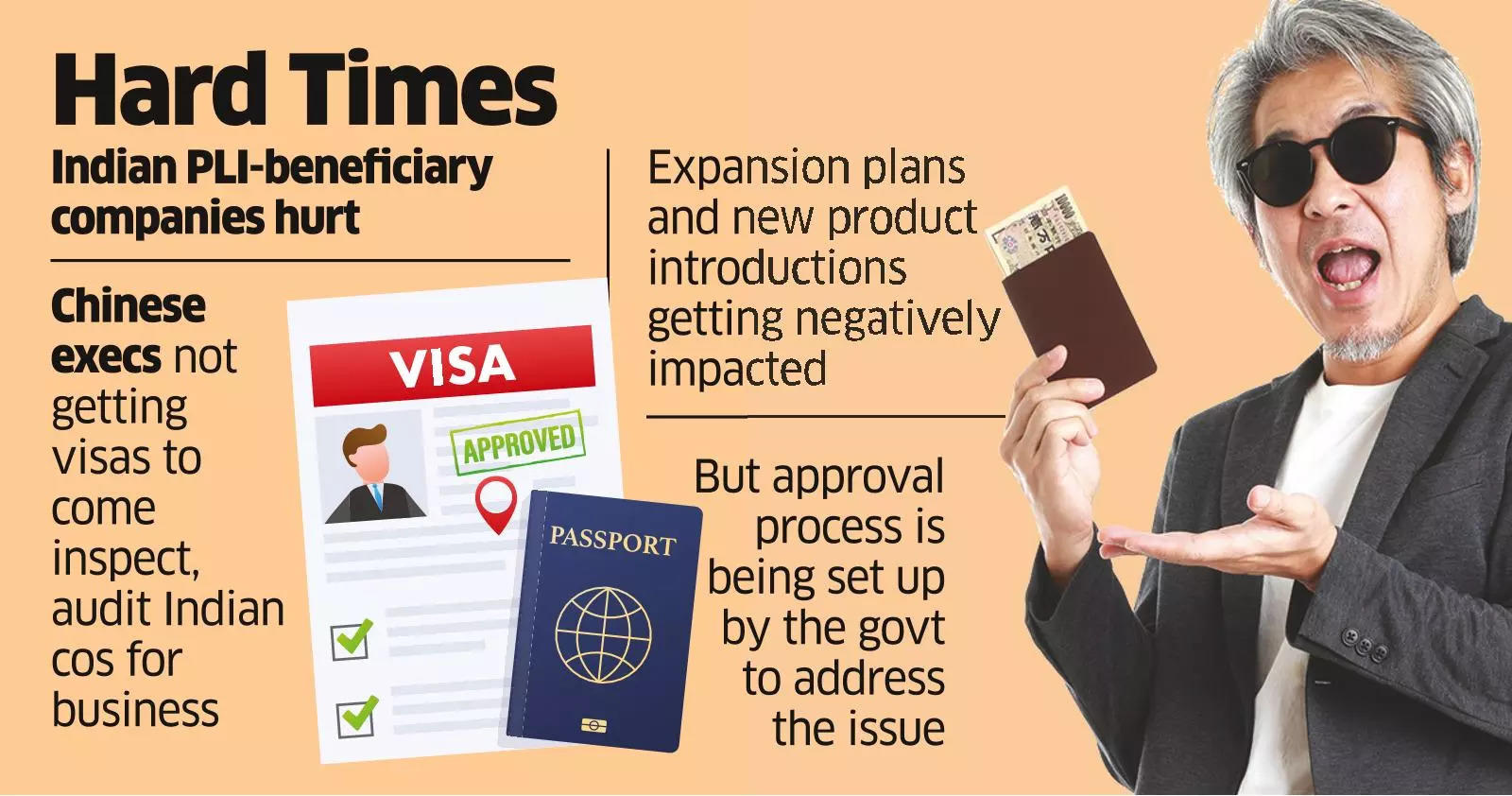[ad_1]

The Indian government is putting in place a mechanism to speed up visas for Chinese nationals required mainly for installation, expansion and repair work in the electronics manufacturing sector, especially for companies approved under the production-linked scheme (PLI).
This comes with the electronics manufacturing industry facing complaints of challenges due to difficulties in getting visas for Chinese nationals. As per industry executives, installation, expansion, and repair work are being hit the most as they require skilled Chinese nationals to execute the work.
Some Indian smartphone contract manufacturers who have made investments under the production-linked incentive (PLI) schemes are awaiting orders from Chinese brands, who in turn, have been unable to make any moves as their executives are not getting Indian visas.
But a system is now being put in place to grant visas to the Chinese nationals, industry executives said.
“An approval process is being put in place, particularly for the PLI-beneficiary companies, where the applicant has to fill a detailed form from China, along with the details to be submitted by their partner PLI-granted companies in India. Once these are submitted, the administrative ministry must send a recommendation, after which the visa can be granted,” said an industry executive, asking not to be identified.The executive added that the process has just started from this month, but visas haven’t yet come through.
“Expeditious issuance of business and employment visas are critical for setting up manufacturing capacities and expanding. We are sure that this process will be smoothed and normalized sooner rather than later,” Pankaj Mohindroo, chairman of India Cellular and Electronics Association (ICEA), told ET. The Chinese government on its part has started to streamline visas for Indian nationals.
“In the first half of 2023, the Chinese Embassy & Consulates General have issued over 71,600 visas to Indian people travelling to China for purposes of business, study, tourist, work, family reunion etc,” Wang Xiaojian, a spokesperson for the Chinese embassy in India, tweeted last week.

The visa issue is an offshoot of the Indo-China border tensions, which led to the Press Note 3 of 2000, which said a company based out of a country that shares land border with India (like China) can invest in India only after receiving government clearances.
While the ministry of electronics and IT (MeitY) helps electronics companies in securing visas, there is no macro policy for visas to Chinese, and hence, problems persist.
“While the government has pushed Chinese handset brands to rope in Indian manufacturers to ramp up local production, the company officials have said they will need to get their people from headquarters to visit the facilities and do the necessary audits, but none of them are being granted visas,” said a second industry executive on condition of anonymity.
“Something as small as being granted visas is not getting resolved, how can they get the confidence to shift a chunk of their production to India?” he added. He cited an example of a electronics component manufacturer who needs just three Chinese executives to come to India to tune the machinery they have purchased to increase their productivity. But for the last six months, they have been trying but not getting visas to come to India.
As per officials, due to the trust deficit between India and China, getting visas for Chinese nationals is a big and time-consuming task. There is involvement of various ministries including ministry of home and external affairs to do the checks.
“Visas are being given to Chinese nationals and we do step in when required,” said a government official on condition of anonymity.
Another executive said for products that are not currently being made in India, there is a definite need for Chinese engineers who have the necessary expertise of manufacturing them to visit the Indian facilities and train the floor staff. They are needed to train people on how to use certain machinery, carry out complicated processes, and to configure the software for each machine, most of which are made in China.
For now, the executive said, the issues are being resolved through video conferencing and making the Indian engineers visit the facilities in China to gain the necessary knowledge, who then come back and train the rest of the staff.
[ad_2]
Source link






